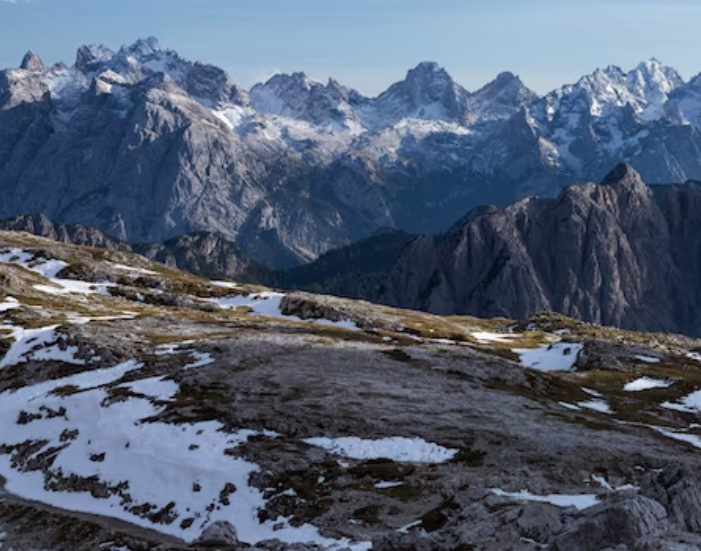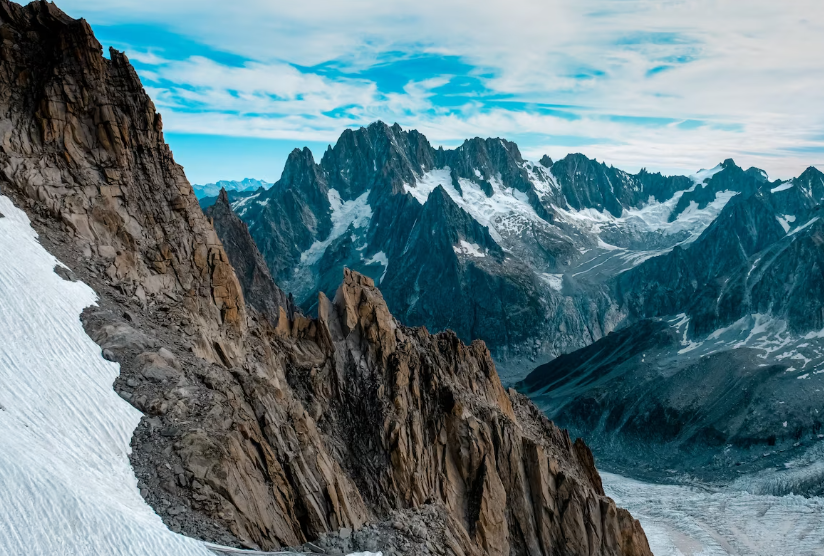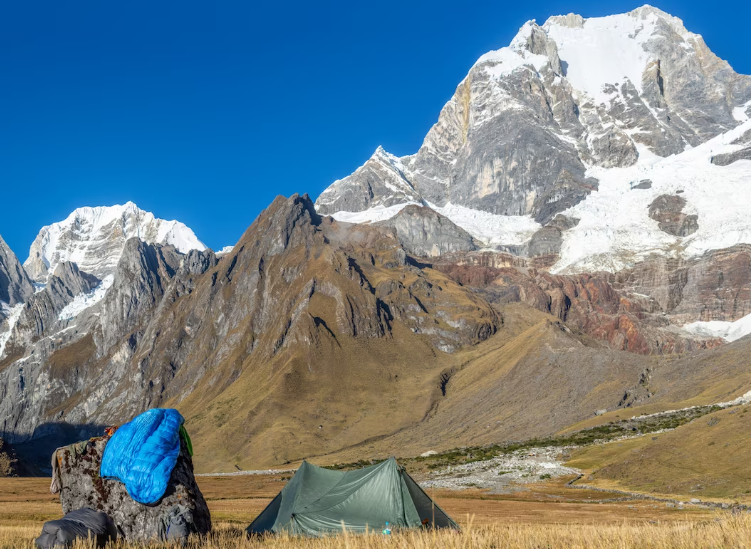Are you searching for Nanga Parbat Rank In World Majestic Peaks? In the realm of towering giants that grace the Earth’s surface, Nanga Parbat stands as an awe-inspiring testament to nature’s grandeur. We delve into the heart of this majestic mountain, exploring its unique attributes, its rank among the world’s peaks, and the breathtaking allure that has captivated adventurers and mountaineers for generations. Nanga Parbat, often referred to as the is a formidable presence in the western Himalayas of Pakistan. Its soaring peak reaches a staggering 8,126 meters (26,660 feet) above sea level, making it the ninth-highest mountain on the planet.
Geological Origins

Nanga Parbat’s geological origins are as captivating as its towering summit. This majestic peak was formed during the collision of the Indian and Eurasian tectonic plates, resulting in the uplift of the Himalayan mountain range. The process of its creation spanned millions of years, leaving behind a mountainous masterpiece that has intrigued geologists and explorers alike.
Cultural Significance
Beyond its geological significance, Nanga Parbat holds deep cultural value for the people of Pakistan. It is integral to the region’s rich heritage, often featured in local folklore and legends. This mountain is believed to be the dwelling place of fairies in local tales, adding an air of mystique to its already awe-inspiring presence.
Nanga Parbat’s Climbing Challenges

Nanga Parbat’s ascent is not for the faint of heart. Its steep, icy slopes, volatile weather conditions, and frequent avalanches make it a formidable challenge even for the most seasoned mountaineers. The mountain’s unpredictability has earned it the ominous nickname “Killer Mountain.”
Tragic History
The history of Nanga Parbat climbs is marked by tragedy. Numerous expeditions have faced devastating setbacks, including the loss of experienced climbers. The mountain’s unforgiving nature has claimed the lives of many brave adventurers, further cementing its reputation as one of the world’s most perilous peaks.
Nanga Parbat’s Rank Among the World’s Peaks
Nanga Parbat’s elevation and its challenges make it a prominent figure in the world of mountaineering. Here, we explore its rank among the highest peaks on Earth Nanga Parbat proudly holds the title of the ninth-highest mountain globally, a distinction that places it in an elite league of towering peaks. This ranking alone underscores its significance in the world of high-altitude mountaineering. Mountains that breach the 8,000-meter mark are affectionately known as the ” Nanga Parbat is a proud member of this exclusive club, standing tall as one of only 14 mountains on Earth to achieve this remarkable feat. Despite its dangers, Nanga Parbat continues to beckon adventurers from around the world. Its challenging terrain and lofty elevation are irresistible to mountaineers seeking to test their mettle and add their names to the annals of mountaineering history.
The Allure of Nanga Parbat

Nanga Parbat’s allure extends far beyond its rank among the world’s peaks. It possesses a magnetic charm that draws both seasoned mountaineers and curious travelers alike. The sheer majesty of Nanga Parbat is a visual spectacle like no other. Its towering summit, often shrouded in clouds, presents an ever-changing panorama of light and shadow. Sunrise and sunset over Nanga Parbat are moments of transcendent beauty that leave onlookers breathless. For mountaineers, Nanga Parbat represents the ultimate challenge. Conquering its heights is a testament to human determination and courage. The allure lies not only in reaching the summit but in navigating the treacherous journey to get there. Exploring Nanga Parbat is also a cultural odyssey.
Visitors have the opportunity to engage with the rich traditions and warm hospitality of the local communities in Pakistan, gaining a deeper understanding of the region’s vibrant heritage. Climbers tackling Nanga Parbat face several route choices, each with its own set of challenges. The most popular route is the Diamir Face, known for its breathtaking views but also its high level of difficulty. The Rupal Face, on the other hand, offers a less crowded but equally challenging alternative. One of the key factors in successfully scaling Nanga Parbat is acclimatization. The high altitude presents a significant challenge to the human body, and climbers must spend time at various camps on the mountain to adapt to the thin air. This process is critical for preventing altitude sickness and ensuring a safe ascent.
A Test of Endurance and Skill
Scaling Nanga Parbat isn’t just a physical test; it’s also a mental challenge. Climbers must possess unwavering determination, resilience, and the ability to make quick, critical decisions in life-threatening situations. The mountain’s reputation as the “Killer Mountain” is a constant reminder of the dangers that loom. The technical aspects of climbing Nanga Parbat are demanding. Climbers often encounter steep rock faces and icefalls that require advanced climbing skills. The ability to use climbing equipment effectively and navigate complex terrain is paramount to success.
Conquering the Summit
Reaching the summit of Nanga Parbat is the ultimate triumph for any mountaineer. The sense of accomplishment is unparalleled, and the panoramic views from the top are nothing short of breathtaking. Climbers often describe it as a surreal and humbling experience. While reaching the summit is a momentous achievement, it’s important to remember that the descent is equally challenging. Fatigue and altitude can take a toll on climbers, making the journey back to base camp a critical phase of the expedition.
Conclusion
Nanga Parbat stands tall as a symbol of nature’s grandeur and human ambition. Its rank among the world’s peaks is a testament to its significance in the realm of high-altitude mountaineering. Yet, beyond its formidable statistics, Nanga Parbat’s allure lies in its ability to captivate the hearts and minds of all who gaze upon its breathtaking beauty.
In the world of mountaineering, there are mountains, and then there is Nanga Parbat—an icon of challenge, adventure, and the indomitable human spirit.
Frequently Asked Questions (FAQ) About Nanga Parbat Rank In World
Is Nanga Parbat suitable for beginners?
Nanga Parbat is considered one of the most challenging mountains to climb, and it’s recommended only for experienced mountaineers. Novice climbers should gain extensive high-altitude experience before attempting this formidable peak.
What are the best months for climbing Nanga Parbat?
The best time for climbing Nanga Parbat is during the summer months of June to August when weather conditions are relatively stable. However, even during these months, the mountain’s weather can be unpredictable, so climbers must be prepared for sudden changes.
How long does it take to climb Nanga Parbat?
The duration of a Nanga Parbat expedition can vary depending on several factors, including the chosen route and weather conditions. On average, it takes about six to eight weeks to complete the ascent and descent.
Are there rescue services available on Nanga Parbat?
While there are some rescue services in the region, reaching climbers in distress on Nanga Parbat can be extremely challenging due to its remote location and harsh conditions.
What permits are required to climb Nanga Parbat?
Climbers need permits from the Pakistan Alpine Club and the local government to attempt Nanga Parbat. It’s essential to obtain all necessary permits well in advance and adhere to local regulations and guidelines.
Read About Why Nanga Parbat Is Called Killer Mountain – Pakistan


